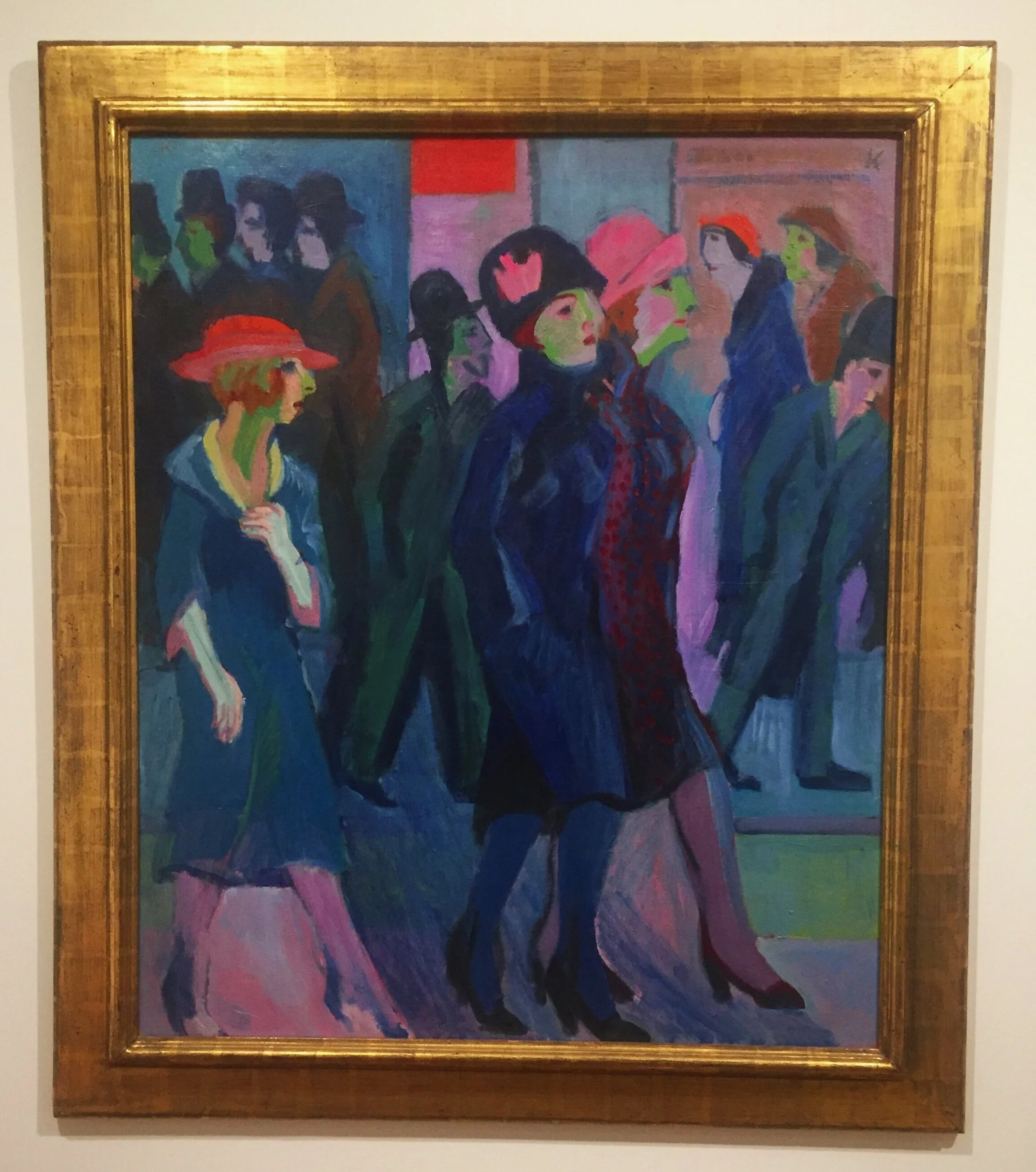I drove out to Milwaukee for a day trip. It had been a few years since I had been to the city and a three-day weekend and sunny weather seemed a good excuse to make the journey north. My first stop was the Milwaukee Art Museum. I arrived just as it opened and spent several hours wandering the galleries. I hadn’t been to an art museum in several months and, instead of simply passively observing, I attempted to approach the works with a critical eye, taking note of what caught my attention or what might serve as potential reference material. I’ve collected a few images (my own and sourced from the internet) of pieces that particularly stuck out to me.

Robert Alan Bechtle, "Xmas in Gilroy" (1971)
This was one of the first pieces I saw upon entering the gallery. There’s something about the light- it’s bright, high key, but there’s still a sense of contrast and depth to the scene. I love how certain areas of the image are overexposed, it feels very real, like we’re sitting in a chair, alongside these women.

Ross Blackener, "Outstanding European" (1989)
This piece is ethereal and ghostly with its cool palette of blues and white. Yet in the stillness of the objects, there’s a sense of motion as colors streak across the canvass.

Christian Ludwig Bokelmann, "The People's Bank Shortly Before the Crash" (1877)
I love the composition here, especially as an example of dealing with a large number of people: the men in the foreground, the group to the left, and the people gathered on the staircase to the right- leading your eye up into the building. There are new things to discover in each section of the painting, from different groups in conversation to the overturned basket in the bottom corner.

George Inness, "Sunset in Georgia" (1890)
This one is best viewed in person. There’s a depth to the colors, an ability to see into the shadow. The warmth of the sunset peeks through the shadows, casting a dull orange glow on the spaces between the trees.

Ernst Ludwig Kirchner, "Street Scene" (1926)
This piece takes a more impressionistic approach to color, but I found the choice of palette evocative of that time of day just after the sun has set, where there’s still some light and the world is very blue. I love the greens, blues, and pinks- an interesting combination of warm and cool. It’s a bold color palette, but one that could be interesting in a film, given the right scene.

Johann Georg Meyer, "Girl Reading" (1848)
This painting feels like such an obvious study of light, but I appreciate how simple it is to break down the lighting scenario- it’s something that could so easily be transposed into a photograph. There’s a light coming from the window and bouncing onto the pages of the book, lighting the girl’s face. It’s a basic lighting setup, but it’s simplicity made me think “I could use that in my own work!”

Ludwig Munthe, "Sunset in Norway" (1892)
This one is just lovely (again, better in person). Munthe captures the time of day- sunset- in blazing color.

Ferdinand Georg Waldmüller, "The Interruption" (1853)
Waldmüller’s piece feels photographic in the richness of the colors and crispness of the blacks. It’s another piece where the light shines through in a way that feels very natural and beautiful.

Jerry Berndt, "Schwa's Tap- Howard and Howell Ave. - Milwaukee" (1983)
I found the framing in this photograph interesting. The camera placed on the bar, looking slightly up, favoring the ceiling more so than the man in the frame. It’s an unusual angle that showcases the space.

Robert Henri, "Street Corner" (1899)
The interplay between light and dark stands out in this painting. I thought it was a bold choice for almost half of the scene to be shrouded in deep shadow, with only a fragment illuminated. It feels very real and evokes that time of day when the sun is starting to go down and the shadows of buildings begin to swallow up the world.